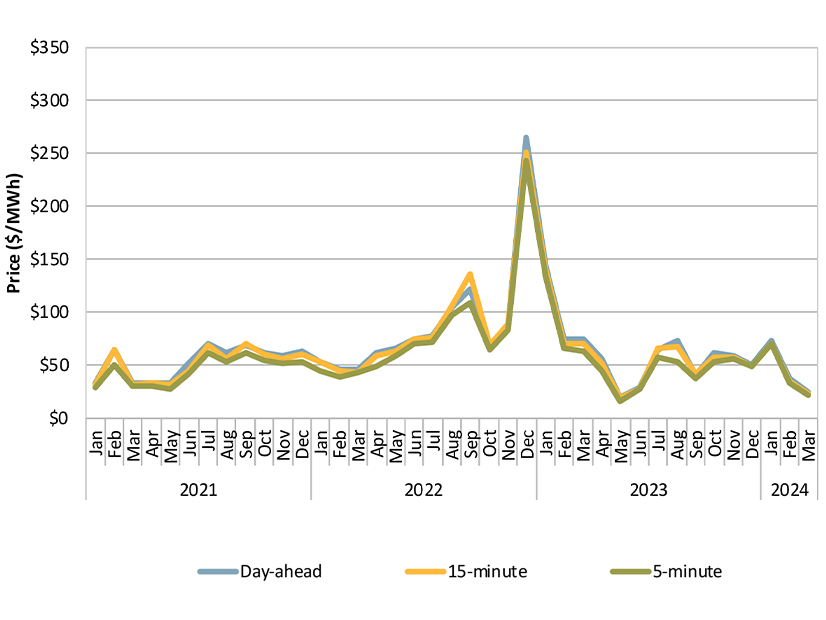First-quarter electricity prices in CAISO markets were down sharply from the same period in 2023, despite sharp spikes during the January cold snap in the Pacific Northwest, the ISO’s Department of Market Monitoring said Oct. 17.
January’s extreme weather events were the “major story for the wholesale electricity markets in the first quarter of 2024,” Ryan Kurlinski, a DMM senior manager, said during a market issues and performance meeting covering Q1.
The winter event saw Pacific Northwest and Intermountain West balancing authority areas hit an average of about $150/MWh in the Western Energy Imbalance Market (WEIM), compared with $65/MWh in other BAs in the market. As a result, transfer capacity in the WEIM was frequently constrained, preventing lower-priced marginal energy in southern areas from setting lower prices in the north, the DMM found.
Lower natural gas prices across the WEIM compared with Q1 2023 drove decreases in average electricity prices, despite the cold weather events. Prices at both California natural gas trading hubs decreased by more than 60% compared with 2023, helping undercut average power prices by 53%.
“In Q1 of 2024, after we get past the severe cold weather event up in the Pacific Northwest and into mid- and late January, prices significantly drop across the WEIM,” Kurlinski said. “Even with the severe cold weather event, high January prices in the Pacific Northwest and Intermountain West were about 20% lower in Q1 2024 on average compared to Q1 in 2023.”
Congestion and price separation between the Pacific Northwest and other BAAs continued into February and March, though prices were still lower than the previous year.
Congestion played a large role in market impacts during the January cold snap. Historically, congestion rent in the CAISO BA has been in the import direction over the interties, but Q1 saw a “huge spike” in export congestion rent over the ISO’s intertie constraints, symbolizing another one of the “most interesting and major stories of Q1 2024,” Kurlinski said.
“In Q1 2024, intertie congestion rent exploded to $133 million [from $13 million a year earlier]. $130 million of that was in the export direction,” most of which was on the Malin intertie in January, Kurlinski added.
The distribution of that rent has been the subject of ongoing controversy in the West, particularly in the context of the competition between CAISO’s Extended Day-Ahead Market and SPP’s Markets+. (See Powerex Report Expands NW Cold Snap Debate and NW Freeze Response Shows WEIM Value, CAISO Report Says.)
Congestion rent on internal constraints in the CAISO BA in the day-ahead market decreased from $265 million in Q1 2023 to $125 million in 2024.
Additionally, transmission ratepayers lost around $53 million in congestion revenue rent auctions, up from $30 million in Q1 2023.
Kurlinski also noted that real-time balance offset costs in the CAISO area were $51 million in Q1 2024, down from $90 million in 2023. The primary driver of the uplift is load getting paid a different real-time price than generation.
Bid cost recovery (BCR) payments were also down to $41.5 million from $80.3 million in Q1 2023, largely due to a decrease in the residual unit commitment portion of BCR.


